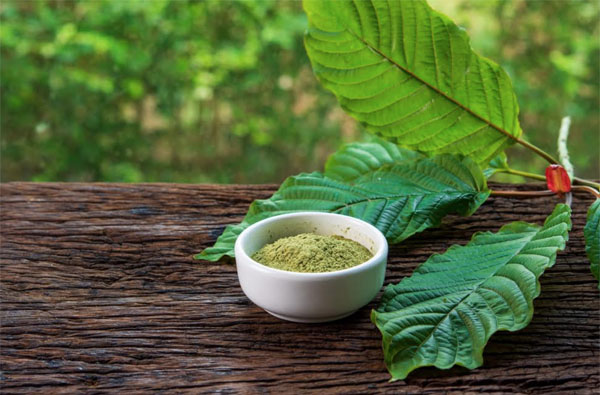Does Kratom Cause Constipation?
By Space Coast Daily // September 12, 2024

Constipation is a common concern for individuals who use Kratom, an herbal supplement famous for its pain-relieving and mood-enhancing effects. While Kratom has many potential benefits, one of the side effects often reported by users is constipation.
This issue arises due to Kratom’s interaction with the body’s digestive system, similar to how opioids can affect bowel movements. Understanding how Kratom influences your digestive health is crucial if you’re a regular user or considering incorporating it into your wellness routine.
In this introduction, we’ll explore the connection between Kratom use and constipation, the mechanisms behind it, and offer some tips on how to manage or prevent this uncomfortable side effect, ensuring a more balanced and informed approach to using the best kratom brands.
Does kratom help with severe pain?
Yes, Kratom is often used by individuals seeking relief from severe pain. The plant’s leaves contain alkaloids, particularly mitragynine, and 7-hydroxymitragynine, which interact with the body’s opioid receptors to produce pain-relieving effects. These alkaloids can provide significant relief for various types of pain, including chronic pain, arthritis, and fibromyalgia, without the intense side effects associated with traditional opioids.
Many users find that specific strains of Kratom, such as Red Borneo or Red Maeng Da, are particularly effective in managing severe pain due to their higher alkaloid content. However, it’s important to note that while Kratom can be an effective pain management tool, it should be used with caution. There are potential risks of dependence, which may not be suitable for everyone. Consulting with a healthcare professional before using Kratom for severe pain is always advisable.
How does kratom work in constipation?
Kratom, including strains like Green Thai Kratom, can contribute to constipation due to its interaction with the body’s opioid receptors, which slow down the digestive system. When Kratom is consumed, its active alkaloids, particularly mitragynine, bind to these receptors, reducing the motility of the gastrointestinal tract. This slowing of gut movement can lead to harder stools and difficulty passing them, resulting in constipation.
The constipating effect of Kratom, including Green Thai Kratom, is similar to that of opioid medications, which are well-known for causing this side effect. The severity of constipation can vary depending on the specific strain used, such as Green Thai Kratom, the dosage, and the frequency of use. Regular and high doses of Kratom are more likely to cause significant constipation.
To manage or prevent constipation while using Kratom, including Green Thai Kratom, it’s essential to stay hydrated, consume a high-fiber diet, and consider using natural stool softeners or laxatives if necessary. Reducing the dosage or frequency of use may also help alleviate this side effect.
Ways to avoid constipation while using Kratom?
Avoiding constipation while using Kratom involves a few proactive steps to maintain healthy digestion. Here are some effective strategies:
- Stay Hydrated: Drink plenty of water throughout the day to keep your digestive system moving smoothly. Adequate hydration can help soften stools and prevent constipation.
- Increase Fiber Intake: Incorporate fiber-rich foods into your diet, such as fruits, vegetables, whole grains, and legumes. Fiber helps add bulk to stools and promotes regular bowel movements.
- Exercise Regularly: Physical activity stimulates digestion and can help prevent constipation. Even light exercises like walking can make a difference.
- Limit High-Dose Usage: Higher doses of Kratom are more likely to cause constipation. Stick to lower doses or reduce the frequency of use to minimize this risk.
- Consider Probiotics: Probiotics can support a healthy gut microbiome, essential for regular digestion. Consider adding yogurt, kefir, or probiotic supplements to your diet.
- Use Natural Laxatives: If constipation occurs, consider natural laxatives like prunes or magnesium supplements, but use them cautiously and consult a healthcare provider if necessary.
- Monitor Your Body: Pay attention to how your body reacts to Kratom and adjust your usage accordingly. If constipation becomes a persistent issue, it may be necessary to reevaluate your Kratom consumption.
What Are the Ways to Use Kratom?
Kratom can be used in several different ways, depending on your preferences and desired effects. Here are some of the most common methods:
- Toss and Wash: This is one of the quickest and simplest ways to consume Kratom. You place the desired dose of Kratom powder directly in your mouth and wash it down with water or another beverage. This method provides fast absorption but can be harsh for some due to the bitter taste.
- Kratom Tea: Brewing Kratom into tea is a popular method that helps reduce its bitterness. You can simmer Kratom powder or leaves in water for about 20 minutes, then strain the liquid and drink it. Adding honey or lemon can improve the flavor.
- Kratom Capsules: For those who want to avoid the taste of Kratom, capsules are a convenient option. They contain pre-measured doses of Kratom powder, making them easy to use and transport. However, they may take longer to take effect as they need to dissolve in the stomach first.
- Mixing with Food or Drinks: Kratom powder can be mixed into various foods or beverages, such as smoothies, yogurt, or juice, to mask the taste. This method allows for versatility and makes Kratom more palatable.
- Kratom Extracts: Kratom extracts are concentrated plant forms in liquids, resins, or powders. These are more potent than regular Kratom powder and are often used by those who need more powerful effects. They can be taken directly, mixed with beverages, or added to food.
- Kratom Resin: Kratom resin is a concentrated form made by boiling the leaves down into a thick paste. It can be used independently, dissolved in hot water for tea, or formed into small pellets for easy consumption.
- Kratom Tinctures: Tinctures are liquid extracts from soaking leaves in alcohol or another solvent. A few drops can be taken sublingually (under the tongue) for quick absorption or mixed into drinks.
- Kratom Gum: Although less common, Kratom gum is a chewable option that slowly releases the active compounds as you chew, offering a more gradual onset of effects.
Conclusion: Does kratom really work in constipation?
In conclusion, while Kratom is often used for its pain-relieving and mood-enhancing properties, it can also cause constipation, much like traditional opioids. This side effect is due to Kratom’s impact on the digestive system, where it slows down bowel movements, leading to discomfort for many users. To mitigate this, staying hydrated, maintaining a fiber-rich diet, and monitoring your Kratom usage are essential strategies.
Understanding how Kratom affects your body and taking proactive steps to manage potential side effects can help you use this herbal supplement more effectively and comfortably. If constipation persists, consulting with a healthcare professional is advisable to ensure safe and informed usage.












